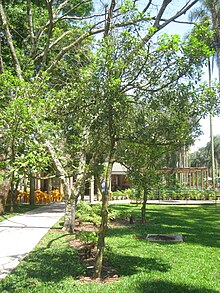
Aspidosperma cylindrocarpon is a timber tree native to Brazil, Paraguay, Bolivia, and Peru. It is common in Atlantic Forest, Cerrado and Pantanal vegetation of Brazil. This plant is cited in Flora Brasiliensis by Carl Friedrich Philipp von Martius. In addition, it is useful for beekeeping.

Aspidosperma macrocarpon is a timber tree native to Brazil, Venezuela, Bolivia, Paraguay, and Peru. It is common in Cerrado vegetation. It has a self-supporting growth form with simple, broad leaves. This plant is cited in Flora Brasiliensis by Carl Friedrich Philipp von Martius, and it is useful for beekeeping. Individual plants can grow up to 25 m.

Aspidosperma polyneuron is a timber tree native to Brazil, Colombia, Peru, Argentina, and Paraguay. It is common in Atlantic Forest vegetation. In addition, it is useful for beekeeping.
Aspidosperma ramiflorum is a timber tree native to Brazil and Bolivia.
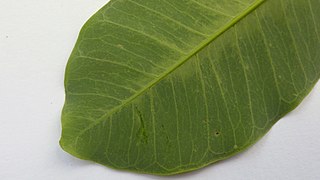
Aspidosperma macrocarpon is a timber tree native to Brazil. This plant is cited in Flora Brasiliensis by Carl Friedrich Philipp von Martius.

Aspidosperma subincanum is a timber tree native to Brazil and Bolivia. It is common in Cerrado vegetation in Brazil. It was first described by Carl Friedrich Philipp von Martius in 1838.

Aspidosperma tomentosum is a timber tree native to Brazil, Bolivia, and Paraguay. It is common in of Cerrado vegetation in Brazil. It was first described by Carl Friedrich Philipp von Martius.
Aspidosperma dasycarpon is a tree native to Brazil, which is typical in Cerrado vegetation. This plant is cited in Flora Brasiliensis by Carl Friedrich Philipp von Martius. In addition, it is useful for beekeeping.
Aspidosperma polyneuron is a timber tree native to Brazil. It is common in Atlantic Forest vegetation. In addition, it is useful for beekeeping.
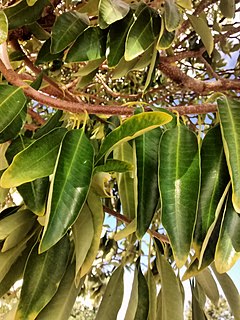
Aspidosperma australe is a timber tree native to Brazil, Argentina, Bolivia, and Paraguay.
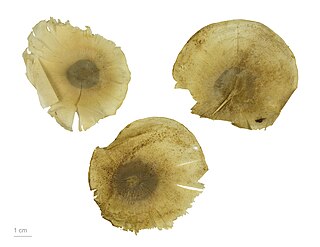
Aspidosperma is a genus of flowering plant in the family Apocynaceae, first described as a genus in 1824. It is native to South America, Central America, southern Mexico, and the West Indies.
Aspidosperma olivaceum is a timber tree native to SE Brazil. It is common in Atlantic Forest, Cerrado, Caatinga, and Pantanal vegetation.

Hancornia is a genus of flowering plant in the family Apocynaceae, first described as a genus in 1812. It is native to South America. It contains only one known species, Hancornia speciosa, commonly called mangabeira, which produces fruits known as mangabas.

Aechmea cylindrata is a bromeliad, native to southeastern Brazil from São Paulo to Santa Catarina. This plant is cited in Flora Brasiliensis by Carl Friedrich Philipp von Martius, and it is often used as an ornamental plant.

Aechmea gamosepala is a bromeliad endemic to southern Brazil. It is often cultivated as an ornamental plant. This plant is cited in Flora Brasiliensis by Carl Friedrich Philipp von Martius
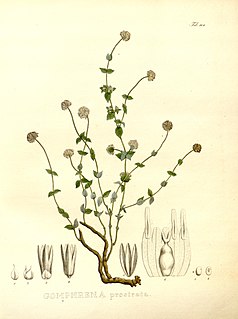
Gomphrena prostrata is a plant native to Caatinga and Cerrado vegetation in Brazil, specially in Bahia and São Paulo. This plant is cited in Flora Brasiliensis by Carl Friedrich Philipp von Martius.
Gomphrena pohlii is a plant native to Cerrado vegetation in Brazil, specially in São Paulo. This plant is cited in Flora Brasiliensis by Carl Friedrich Philipp von Martius.
Peroba, paroba, parova, perobeira, perova and peroveira are common names for various tree species in the families:
